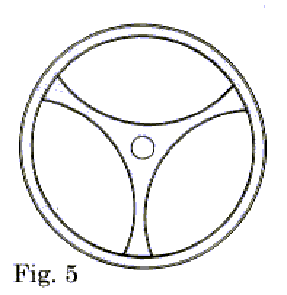Introduction
Movement maker ETA sells movements (and previously ebauches) in several grades:
Grade |
Spring materials |
Regulation/Adjustments |
Mean daily rate |
Isochronism |
Max variation |
|---|---|---|---|---|---|
Economique |
Unknown |
None |
Unknown |
Unknown |
Unknown |
Standard |
Nivaflex NO, Nivarox 2 |
Two positions CH, 6H |
+- 12sec/day |
+- 30 sec/day |
30s |
Elabore |
Nivaflex NO, Nivarox 2 |
Three positions CH, 6H, 9H |
+- 7 sec/day |
+- 15 sec/day |
20s |
Top |
Nivaflex NM, Anachron |
Five positions CH, FH, 6H, 9H, 3H |
+- 4 sec/day |
+- 10 sec/day |
15s |
Chronometer |
Nivaflex NM, Anachron, same as top, but with chronometer certification from COSC. |
Five positions and temperature CH, FH, 6H, 9H, 3H |
COSC |
COSC |
COSC |
Note that not all movements are available in all grades. For example, the ETA 7750 is only sold in Elabore, Top and Chronometer grades.
Hairspring grades
There a 5 grades of Nivarox hairsprings, 1 (best) to 5 (worst).
The difference lies in the consistency of the timekeeping performance due to small changes in the alloyed metals. Nivarox hairsprings consist of cobalt (42-48%), nickel (15-25%), chromium (16-22%), and small amounts of titanium and beryllium. Anachron is said to be a better performing alloy than any Nivarox incarnation which is why it's used on the Top and Chronometre grades. What metals Anachron consists of is another mystery. I've asked watchmakers here and in the real world and searched the internet for days without finding any information. ETA does also offer the option to upgrade from a Niravox 2 to a Niravox 1 hairspring with the nickel balance wheel on the lower two grades.
Shock absorbers
According to ulackfocus, Incabloc is better, made entirely in-house at ETA and has better QA.
Glucydur and the balance wheel
One of the trademark features of ETA movements is their Glucydur balance wheels, which look like this:
(Image credit: Walt Odets)
According to the HH dictionary, Glucydur is
A highly elastic, hard, amagnetic and corrosion-proof alloy used to make monometallic balances, escapements and balance-springs.
A Glucydur balance is made from a copper alloy containing 3% beryllium and around 0.5% nickel. It is recognisable by its gold colour.
Glucydur is a multi-metallic alloy, used in the watch industry for building different parts of the mechanism.
Glucydur is an alloy of beryllium, copper and iron. Due to such properties as hardness, resistance to deformation, damage or magnetic fields and its stability this alloy is perfect for making balance wheels for watches' mechanisms. Glucydur is also resistant to corrosion; it is rather inert chemically. Due to these qualities it is extensively used in producing antimagnetic watches.
Glucydur was developed about the same time with another non-magnetic material - Nivarox.
To learn more about the balance wheel and it's evolution, and the use of Glucydur, I recommend the Odets writeup.
See also
- Incabloc
- Etachoc
- Chronometer
- Grand Seiko
- Adjustments
- Measure movement performance
- TZWS definition of Glucydur balance
Links
- 'Smoke and mirrors 1' is a fantastic post with tons of detail.
- Velociphile has the definitive post
- ETA has pages too, not linkable due to https and flash
